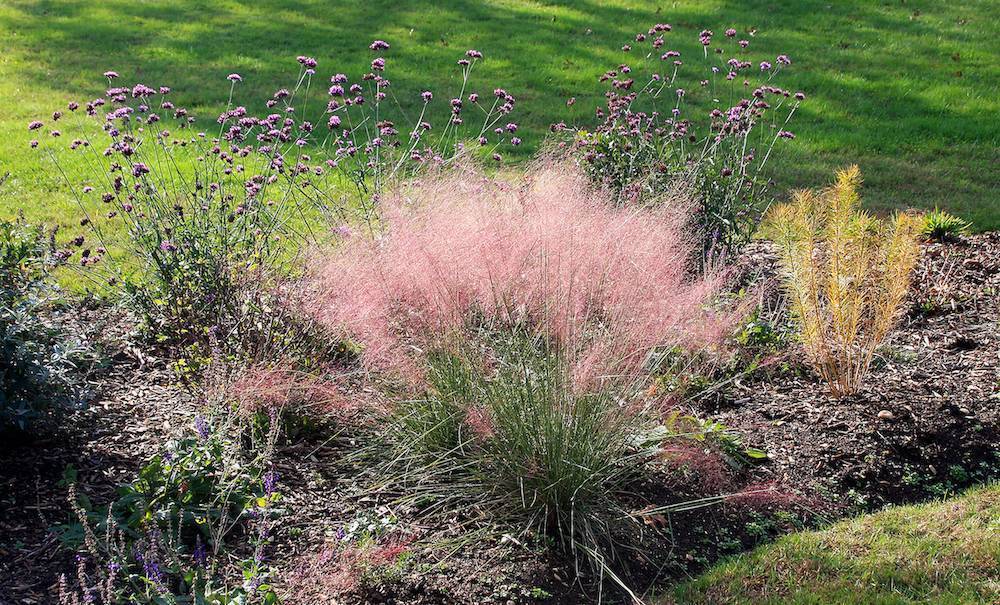Create a low-effort, eco-aware, and gorgeous Vineyard garden.
No one likes to be reminded of limits, and yet it is more and more critical to become heedful in life. Ecological considerations must factor into all that we do: how we consume, how we live, how we raise our children, how we contribute to our communities … and how we garden.
My purpose here is not to be prescriptive so much as it is to be encouraging.
Elements
This is an island of oaks, stands of pitch pine, of frost bottoms with their shadbush and ancient scrub oaks, and native grasslands and meadows of sumac, carex, bearberry, and huckleberry. Our woods are scrubby compared to, say, Pennsylvania’s. Accept and rejoice in their contrasts.
The Island has damp woods, swamps, wetlands, and coves, supporting beetlebung, red maple, winterberry, inkberry and holly, highbush blueberry, clethra, and bulrush. Wild grapes abound. You may find swathes of skunk cabbage, ferns, geraniums, and Solomon’s seal in spring.
This is an island of dry uplands, abandoned fields and pastures supporting candle-flame cedars, colonies of sassafras and viburnum clumps, locust groves, all entwined by Virginia creeper. You’ll find milkweed and dogbane, panicum grasses, little bluestem, Indian grass, mullein, and a multitude of aster and goldenrod varieties.
Dunelands support aronia, beach plum, and bayberry, beach grasses, poison ivy, dusty miller, beach pea, and more goldenrod.
Each element of Island habitat is distinctive and deserves sensitive appreciation, which is why we must avoid copying what they do on the mainland. Skillful eco-aware gardening assesses the situation and works within that framework, rather than clear-cutting a preconceived vision onto poor Martha.
Hard sell
Eco-gardening on the Island involves understanding what happily grows here and will happily thrive on your site; and then putting that knowledge to use: the vocabulary and palette.
Each element of Island habitat is distinctive and deserves sensitive appreciation, which is why we must avoid copying what they do on the mainland.
Eco-gardening does not exact a pledge to use only native. However, the variety of garden-worthy native plants available in the trade will increase and become much wider if knowledgeable gardeners buy and use them effectively.
However, let’s make the case for enticing gardeners and property owners to come around to the view that sees eco-gardens as more, not less. More pollinators; more support for wildlife that shares its home with us; more appreciation and respect for the integrity and inherent beauty of Island landscape.
Look around: What you see is gorgeous, and with an evolving sensibility, highly garden worthy.
Edit: Learn to recognize and appreciate plants where one lives and gardens. If wholesale land clearing does not eliminate them, naturally occurring combinations of vegetation often provide unexpected beauty.
Be informed: Know which invasives quickly take over and create problems (including bird-sown — Martha’s Vineyard is bird heaven); and know which plants are resistant to deer and rabbits.
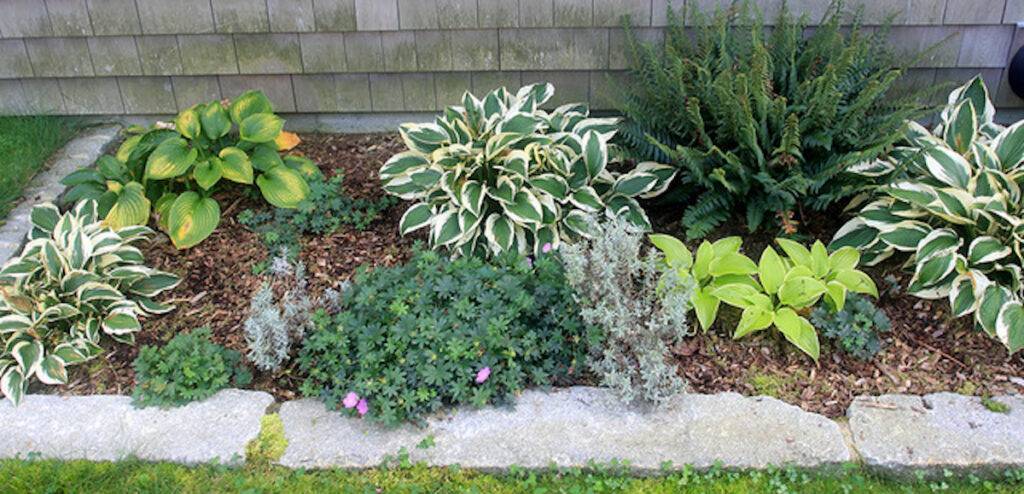
Inputs
Eco-gardening on the Island, and elsewhere, involves learning to be water-wise and limiting “inputs,” which is techno-speak for additional energy-intensive products, techniques, and substances. Inputs urge plants that otherwise could not thrive here to grow outside their innate preferences.
Inputs are irrigation, fertilizers (both organic slow acting, and chemical fast acting), fungicides, pesticides, and herbicides. Gardens and landscapes dependent upon them are on life support: unsustainable in changing times.
Likewise, it is environmentally desirable that biomass, generated by cutting or pruning, remain there, returning nutrients to the soil via composting.
Everything we use to garden and landscape goes somewhere, carried along by water migrating through soil, or taken to the landfill.
That ‘somewhere’ is an aquifer, a bay, a pond, a harbor, or greater body of water where we want to be able to fish, shellfish, swim, sail, and share with our children and pets. Our own bodies are also part of that ‘somewhere.’ (See the Martha’s Vineyard Commission’s “Blue Pages” for a detailed explanation of how best to protect our waters).
Irrigating sandy, fast-draining typical Island soil leads to water waste, erosion, and contamination of Island bays and ponds.
Clear cutting woodland and destroying ground covering vegetation only adds to environmental insult.
The first law of ecology is “Everything Goes Somewhere.” Effluent, fertilizer, pesticide and herbicide, casually bought at the hardware store, and casually applied to lawn and garden.
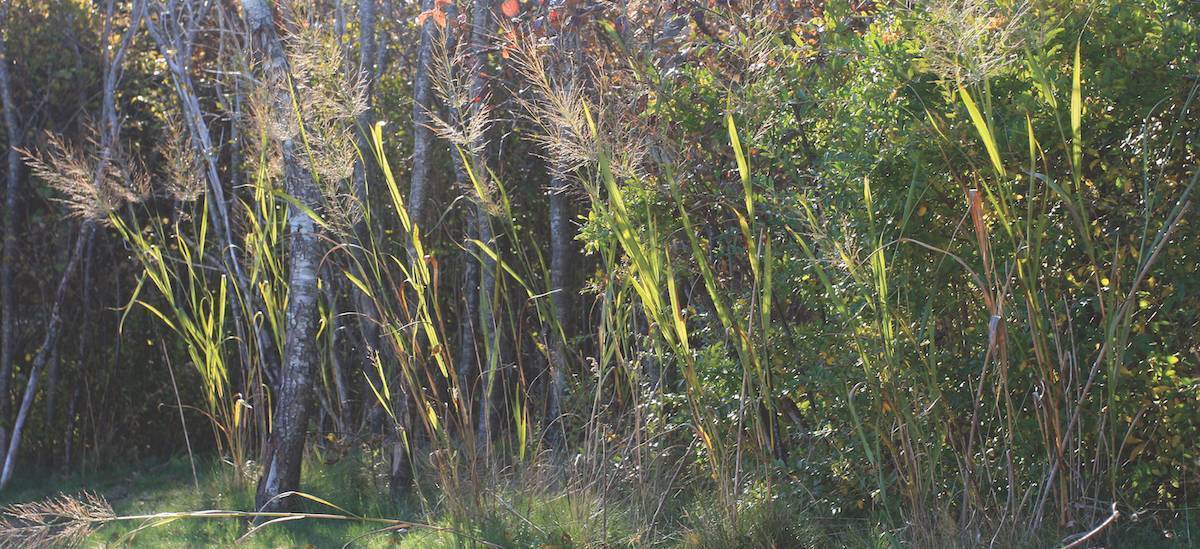
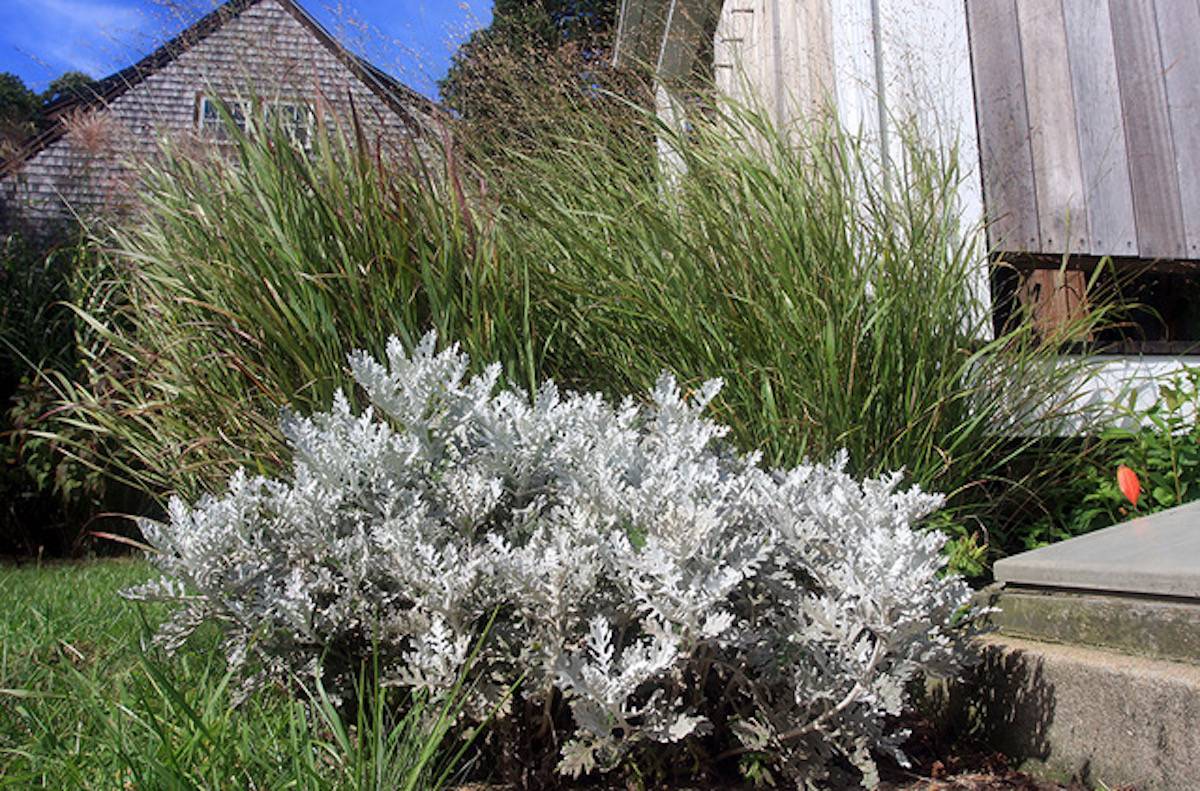
behind over-wintering Senecio
‘Silver Dust.’
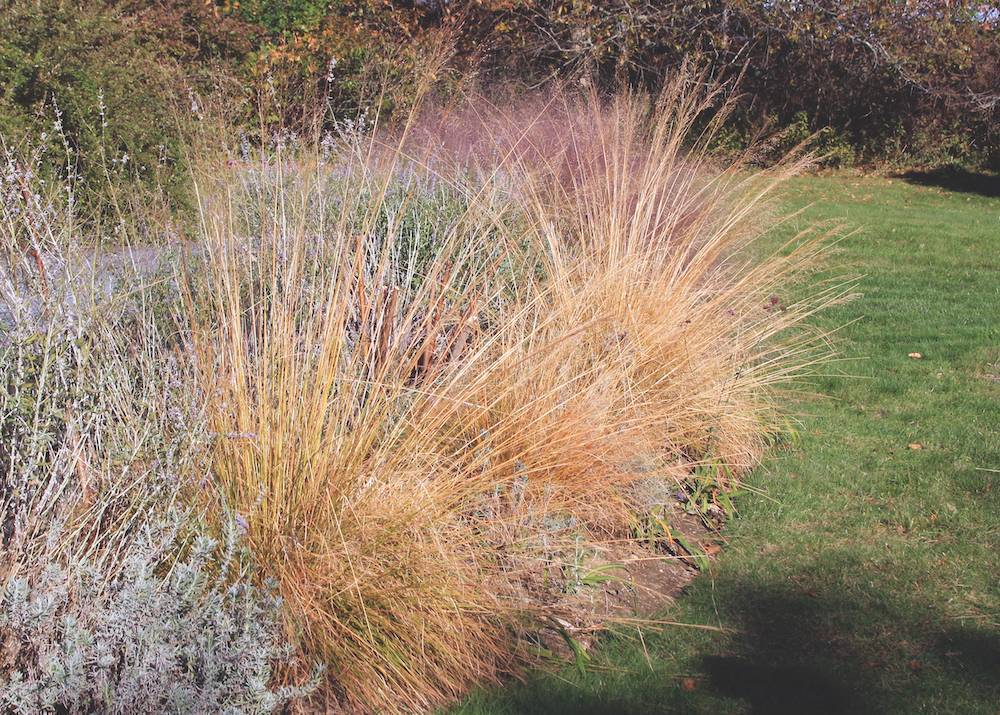
Lawn Culture
Fertilizer manufacture and application are enormous users of energy and producers of greenhouse gas. Our love affair with over-fertilized and over-watered lawns, the diseases they then experience, and the toxic ’cides consequently needed to control them, are part of this obsession. The Vineyard is not turfgrass country nor does it have a turfgrass climate.
It has become standard practice to install irrigation, which is touted as a way to add to property values. This often involves aspiring to an area, as large as possible, of velvety green golf-course-like turfgrass, maintained by hired crews, who may be unaware of regulations intended to protect ecosystem quality, and our health.
The alternative is, of course, the Vineyard lawn: less “mowing and blowing,” smaller, conserving water, and no lawn-care chemicals.
Functional Eco-gardening
Among the images accompanying this article is an easy-care garden, well within the abilities of home gardeners and pros alike. It’s possible to maintain a garden like this at an annual cost of $3,500. Drought tolerant plants grow in full sunshine while shaded beds hold shade tolerant ones. Inputs are minimal and infrequent, including: mulch, composted manure for the dozen ‘Knock Out’ roses, deer and rabbit repellent, and about 50 pounds of low-number organic soil food (fertilizer) spread over seven beds of varying sizes.

